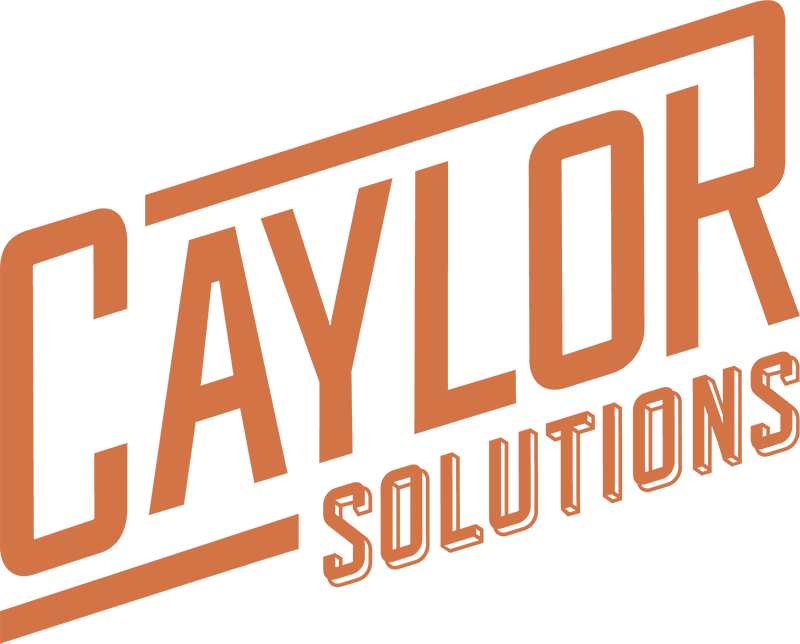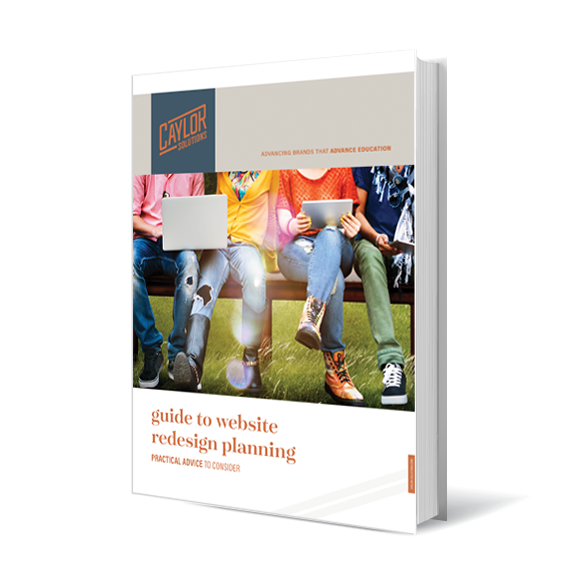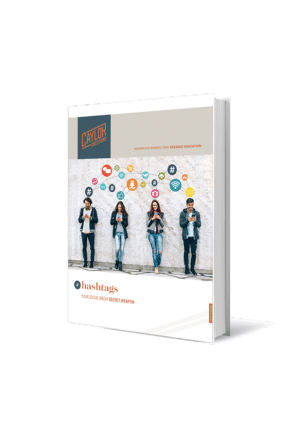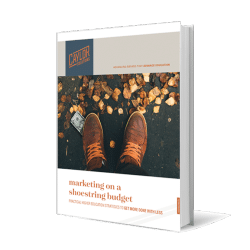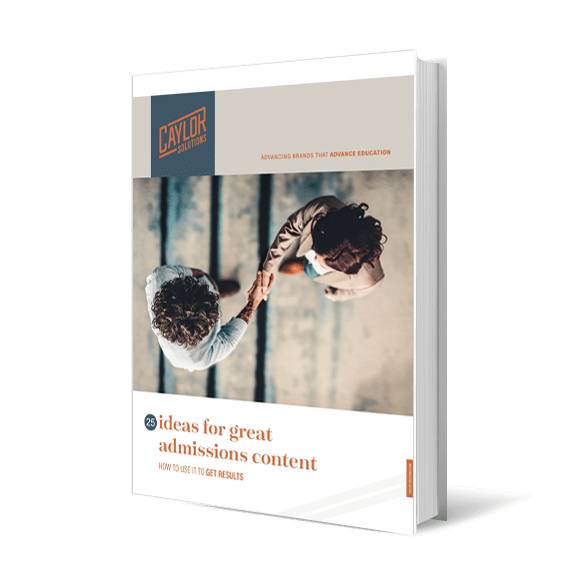The concept of landing pages seems pretty simple, but misconceptions abound about what they are exactly and how they’re supposed to work. I find this a lot in education marketing.
We all agree on the basics. A landing page is essentially a web page where visitors “land,” which offers clear, relevant information. It’s a starting point to take further action.
In education marketing, the definition too often stops there.
This means just about any top navigation or high-priority page can technically be a “landing page.”
But there’s a whole lot more to the concept at work out there in the business world. Education marketers who adopt these best practices discover what landing pages can really do.
Landing Pages Outside of Education Marketing
As an education marketing consultant, I often borrow ideas from the corporate world and apply them to enrollment and advancement.
Not every digital marketing “trick” out there works in education. The more salesy stuff doesn’t always translate into building relationships and developing community.
Other concepts not only work, but prospects have come to expect them from any digital experience. Education marketing included.
Cobbling together definitions from a few sources (HubSpot is one of my favorites), landing pages should have the following characteristics:
- Created for a campaign (a destination following a click on an ad).
- Content is focused on a specific call to action.
- Aims to collect visitor information.
- Offers something in exchange for this information.
- Attractive design with images and/or video.
Another word for this, which is used less often in education marketing is “squeeze page.”
The idea is to create a sense of urgency with action-oriented language. It’s about encouraging your prospects to seize an opportunity.
Why Education Marketing Is Different (But Shouldn’t Be)
I understand if you’re a little uncomfortable with the concept. Most academics don’t relish the image of “squeezing” a prospective student or donor.
But it’s not what you think. At least, it doesn’t have to be.
Encouraging action does not and should not be done in a coercive way. It can and should be done in a positive, inviting way.
“Landing Pages” that Aren’t
I’ve seen – and, I’ll admit, helped build in the past without comment – “landing pages” for education that really aren’t landing pages.
Home, About, Admissions, Student Life, Tuition & Aid, Support, etc., are technically places where visitors might “land.” They provide relevant information that can lead to more.
But typically, these pages are primarily informative and not especially action-oriented.
Sure, there may be links to a Request Info form, or a form embedded on the page. These pages just don’t do much (or anything) to encourage prospects to fill out these forms.
This is a key difference between these pages and true landing pages: usually, the entire purpose of a landing page is to drive visitors toward filling out a form.
Different Pages, Different Roles
Look, I’m not a purist.
It’s okay to call these top-nav pages “landing pages” within your web development team. It’s a way to distinguish them from secondary, lower-traffic pages.
However, I do think it’s important to recognize that these pages aren’t living up to what landing pages can be, what they can do for you.
For one thing, if you’re going to all the trouble to build a digital marketing campaign, your home page is no substitute for a true landing page. These days, that’s a good way to lose prospects to information overload.
Landing pages are designed to be simple, to briefly inform but primarily persuade visitors to take action.
3 Tips to Harness the Power of Landing Pages
Whether your focus is on enrollment or advancement, here’s how you can start applying some best practices toward building true landing pages and improving high-priority pages as well.
1. Create landing pages for campaigns.
Landing pages aren’t meant to be forever. Build them for short-term use around your digital marketing campaigns.
Depending on the campaign, this might be six months, a year, maybe more.
- Every digital ad should point to that page.
- All messaging, typography, imagery, etc. should align with the campaign.
- Embed a form near the top (“above the fold”) to capture contact information.
It will help a lot to offer something for free in exchange.
For example, we’ve put together ebooks for education marketing clients. They provide in-depth useful and/or inspirational advice for prospects with attractive design and imagery.
This is gated content, meaning visitors can only download the free resource if they fill out the contact form.
Another way to go is to send them a small branded gift for free. The point is, they get something, you get something – a lead for your admissions or advancement team to pursue.
2. Redevelop or copyedit key static pages to double as “landing pages.”
While landing pages are typically used in the context of a campaign, I do think there is value in creating them for long-term use as well.
Chances are, we’re talking about tweaking pages you already have.
Take your Request Information page, for example. This should operate just like a landing page. Less informative, more persuasive.
Maybe there’s no immediate offer here (e.g. gated content), but make it clear what the prospect will “get” in exchange. Communicate the value of the information. If you’re sending them a viewbook, tell them what will be in it. Maybe include a picture of the cover.
Another good example is your Donate page. Again, it’s just not enough to have a form in place that allows donors to give.
This page should be chock full of persuasive imagery, testimonials, evidence of impact. Communicate the value of giving, both to the donor and the beneficiaries.
3. Adopt a “landing page-esque” lead generation mindset with high-level pages, too.
Again, your home page is not a true landing page per se.
But any high-traffic page on your website should include persuasive elements that drive prospects toward action.
- Present a clean design with plenty of attractive imagery.
- Don’t overburden your visitors with information.
- Include a call to action with your Apply button.
Let me show you what I mean.
A few years back, we helped Antioch College redevelop their website and applied these principles to the home page.
It’s not a true landing page. But it kind of feels like one.
Note the clean design, clear value proposition statements, and assumptive language.
Antioch isn’t showing you what you might do as a student if you apply. Instead, you’re looking at what you will do, because of course you’re going to apply.
This is what I mean by a lead generation mindset. No high-level page should fail to confidently nudge visitors toward taking the next step.
Ideally, that action will provide you with their contact info – request info, contact, schedule a visit, and of course, donate or apply.
Apply best practices for landing pages to education marketing. Win the day.
We help our clients with all kinds of projects here at Caylor Solutions, including brand campaigns, email marketing, digital marketing, and more.
But your website and supporting microsites and web pages are at the heart of it all.
These are the digital “front doors” for your institution. It’s critical that you roll out the red carpet, shake your visitor’s hand, and make them feel comfortable as you guide them inside.
We love helping education marketers do this, and do it well.
To learn more about how we can help you, contact me today.
Looking for Enrollment Marketing Content that Works?
You’re in luck! We’ve curated 25 awesome ideas inspired by top higher ed institutions across the country and put them in one handy guide: 25 Ideas for Great Admissions Content.
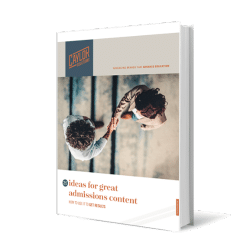
-
- 25 enrollment marketing content ideas you might never have considered before
- Guidance on how to use each one for best results
- Brief discussion on why they work to help you sell these ideas to your team
Get inspired.
Get enrollment results.
Get 25 Ideas for Great Admissions Content.
Download your copy today!
Featured image by Drobot Dean via Adobe Stock
